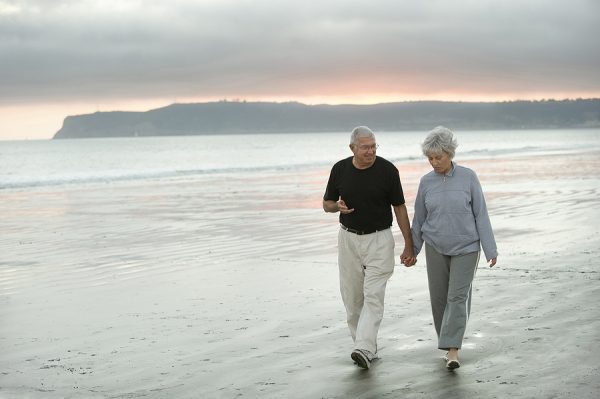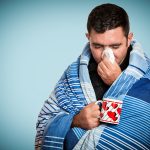By David Blyweiss, M.D., Advanced Natural Wellness
I remember when my relatives, with all of my great aunts and great uncles, would get together for a big holiday dinner. Not long after we finished eating, they would all get up and go outside to take a walk.
You don’t see much of this anymore. That’s a shame, because even a short two-minute walk after eating can lower blood sugar. This, in turn, can help reduce the risk of developing type 2 diabetes. In fact, it even helps people who are at high risk of diabetes maintain better blood sugar and insulin responses after meals.
So even a little bit of walking after a meal is better than none at all. Still, the longer amount of time you spend walking, the greater the benefits. If you can extend the length of your walk to 30 minutes or so, it can cut your risk of diabetes by about 50%.
Better yet, even if you already have diabetes, walking can help improve blood sugar control and significantly lower HbA1c levels.
But walking can do a lot more than that!
Your First Step Toward Cardiovascular Health
Walking is underrated. Most people don’t realize it can be just as important as other, more taxing forms of physical activity.
Regardless of whether you set out at a slow or fast pace, walking can reduce the risk of stroke. But again, the longer time you spend walking the better your results will be, especially if you are a slow walker.
And get this! Stroke survivors who walk at least three or four hours a week can lower their chance of early death by about 54%.
Walking is a low impact form of exercise that is literally the first step toward cardiovascular health. It helps lower blood pressure, heart rate and body mass. It slows cognitive decline, boosts lung function and helps reduce – and even prevent – symptoms of depression.
Walking is also an excellent way to maintain muscle strength, muscle volume and blood flow in your legs. This is something you want to keep in mind as you age, because weak muscles and restricted blood flow in your extremities can impair your balance and stability when you get older.
If you feel you need a walking buddy, find one. If the best you can do is take a short stroll, then take it. And if your health allows it, put a little pep in your step to make walking a more vigorous activity.
Take a Walk with Nature
People over in Japan practice something called shinrin-yoku, which means “forest bathing.” Basically, it’s taking a walk with nature to bathe in the atmosphere. And it’s a cornerstone of health and healing in Japanese medicine.
Now, you might think walking in the forest sounds like a hiking trip. It’s not. Rather, it’s the process of slowing down and allowing yourself to take in the sights, sounds and smells of nature.
I love walking in the greenery… the rustling of leaves, the sun shining through the branches and the smell of fresh air. It’s such a peaceful experience. Just as importantly, being in nature greatly enhances the health benefits of walking.
Taking a walk in a forest or green environment can:
- Lower cortisol concentrations
- Reduce pulse rate
- Decrease blood pressure
- Improve parasympathetic nerve activity
- Lower sympathetic nerve activity
- Boost creativity
Plus, trees and plants emit natural essential oils known as phytoncides
In humans, exposure to phytoncides naturally increases the number and activity of natural killer (NK) cells in the body. NK cells knock out tumor cells and virally infected cells out of the body. So that’s great.
Phytoncide exposure also decreases stress hormone levels. This is why we always seem to feel better after spending time in green areas.
In the end, walking is one of the body’s most basic physical functions. We are born to do it… and we should never stop!
SOURCES:
Buffey AJ, Herring MP, Langley CK, Donnelly AE, Carson BP. The Acute Effects of Interrupting Prolonged Sitting Time in Adults with Standing and Light-Intensity Walking on Biomarkers of Cardiometabolic Health in Adults: A Systematic Review and Meta-analysis. Sports Med. 2022 Aug;52(8):1765-1787.
Henson J, Davies MJ, Bodicoat DH, Edwardson CL, Gill JM, Stensel DJ, Tolfrey K, Dunstan DW, Khunti K, Yates T. Breaking Up Prolonged Sitting With Standing or Walking Attenuates the Postprandial Metabolic Response in Postmenopausal Women: A Randomized Acute Study. Diabetes Care. 2016 Jan;39(1):130-8.
Hamasaki H. Daily physical activity and type 2 diabetes: A review. World J Diabetes. 2016 Jun 25;7(12):243-51.
Jefferis BJ, Whincup PH, Papacosta O, Wannamethee SG. Protective effect of time spent walking on risk of stroke in older men. Stroke. 2014 Jan;45(1):194-199.
Hu FB, Stampfer MJ, Colditz GA, Ascherio A, Rexrode KM, Willett WC, Manson JE. Physical activity and risk of stroke in women. JAMA. 2000 Jun 14;283(22):2961-7.
Joundi RA, Patten SB, Lukmanji A, Williams JV, Smith EE. Association Between Physical Activity and Mortality Among Community-Dwelling Stroke Survivors. Neurology. 2021 Aug 11;97(12):e1182–91.
Murtagh EM, Murphy MH, Boone-Heinonen J. Walking: the first steps in cardiovascular disease prevention. Curr Opin Cardiol. 2010 Sep;25(5):490-6.
Hanson S, Jones A. Is there evidence that walking groups have health benefits? A systematic review and meta-analysis. Br J Sports Med. 2015 Jun;49(11):710-5.
Kang SJ, Kim BH, Lee H, Wang J. The Beneficial Effects of Cognitive Walking Program on Improving Cognitive Function and Physical Fitness in Older Adults. Healthcare (Basel). 2021 Apr 5;9(4):419.
Park BJ, Tsunetsugu Y, Kasetani T, Kagawa T, Miyazaki Y. The physiological effects of Shinrin-yoku (taking in the forest atmosphere or forest bathing): evidence from field experiments in 24 forests across Japan. Environ Health Prev Med. 2010 Jan;15(1):18-26.
Li Q, Kobayashi M, Wakayama Y, Inagaki H, Katsumata M, Hirata Y, Hirata K, Shimizu T, Kawada T, Park BJ, Ohira T, Kagawa T, Miyazaki Y. Effect of phytoncide from trees on human natural killer cell function. Int J Immunopathol Pharmacol. 2009 Oct-Dec;22(4):951-9.
Liu S, Galat V, Galat Y, Lee YKA, Wainwright D, Wu J. NK cell-based cancer immunotherapy: from basic biology to clinical development. J Hematol Oncol. 2021 Jan 6;14(1):7.




